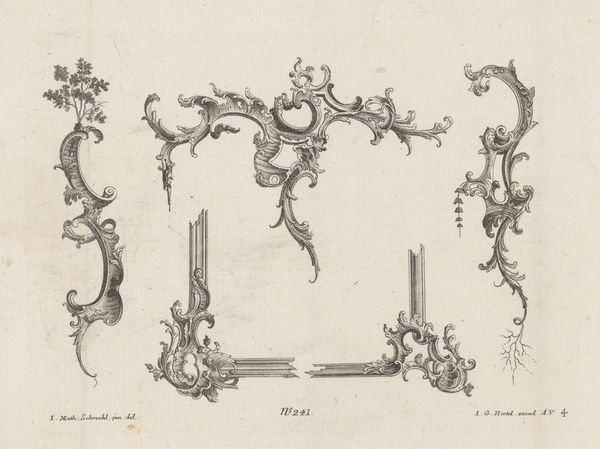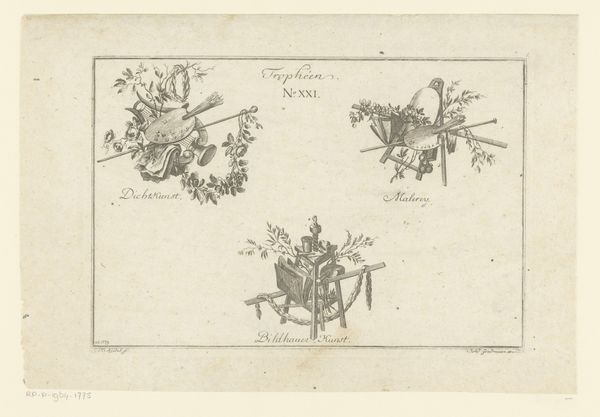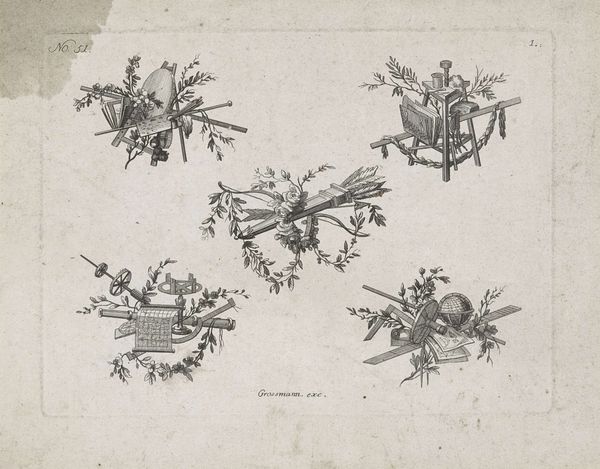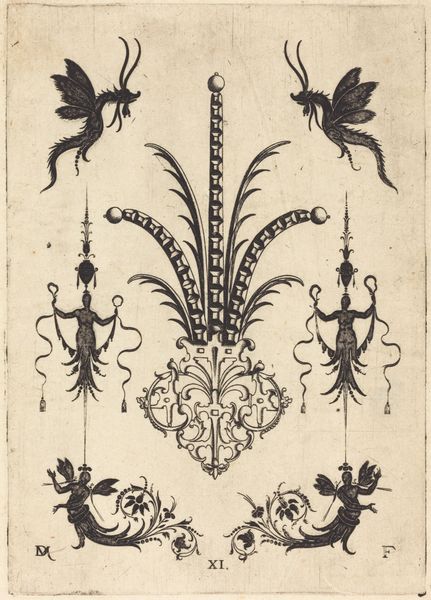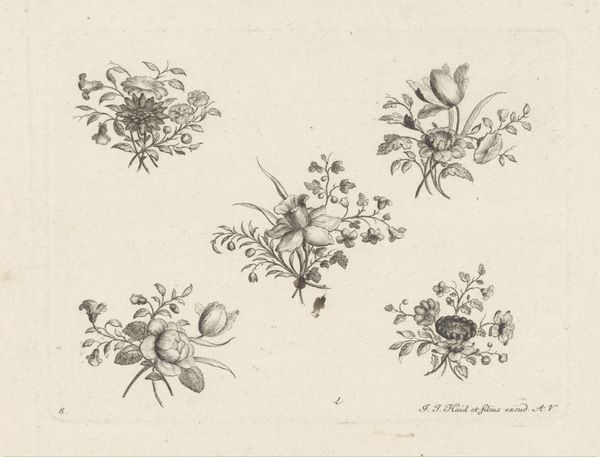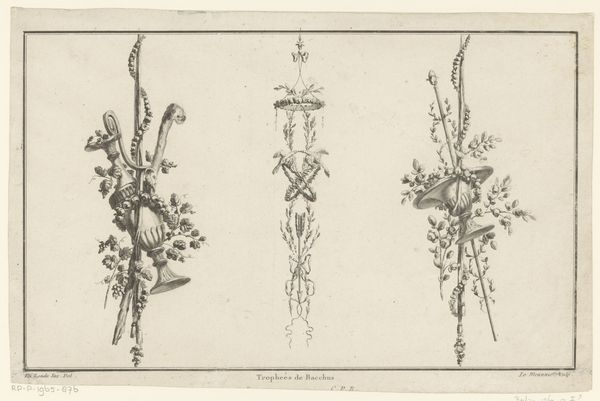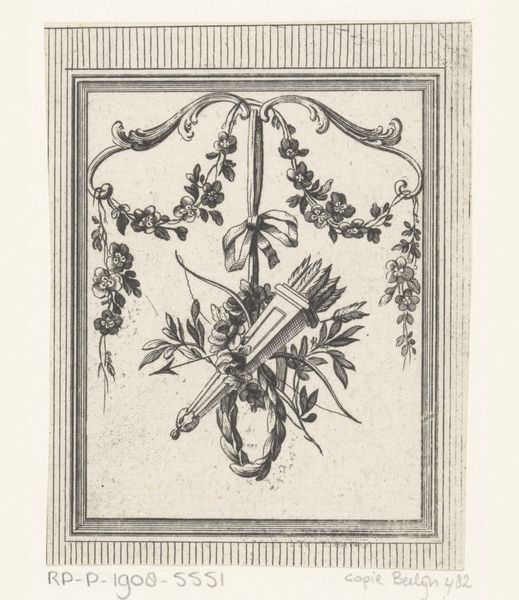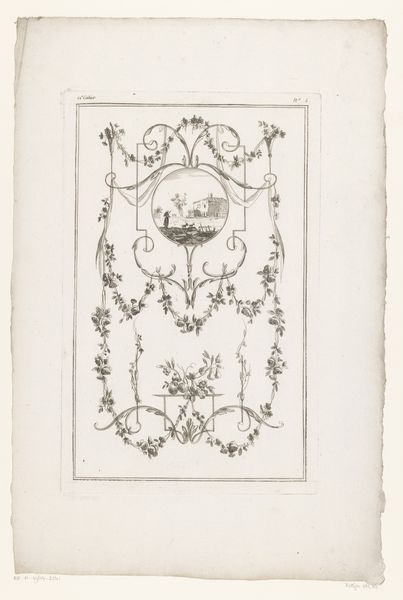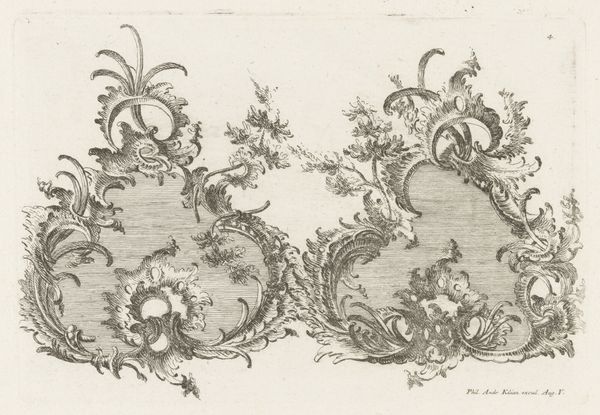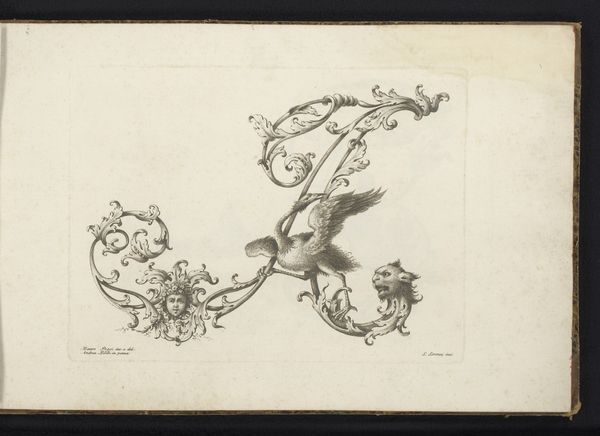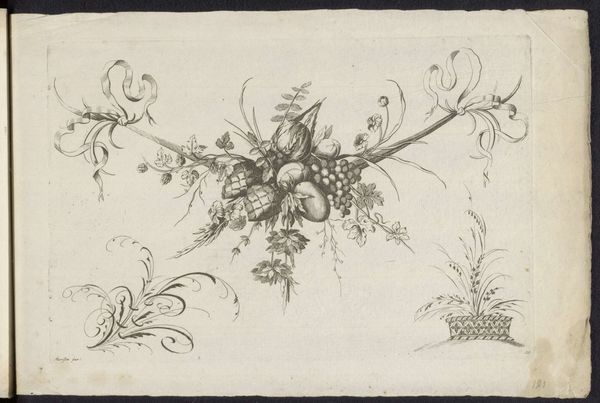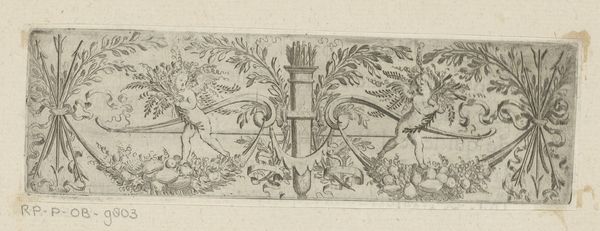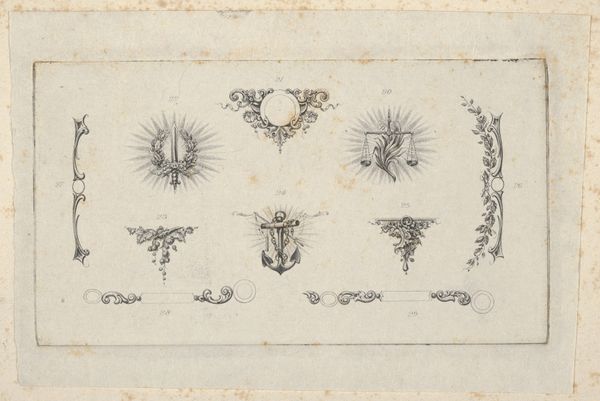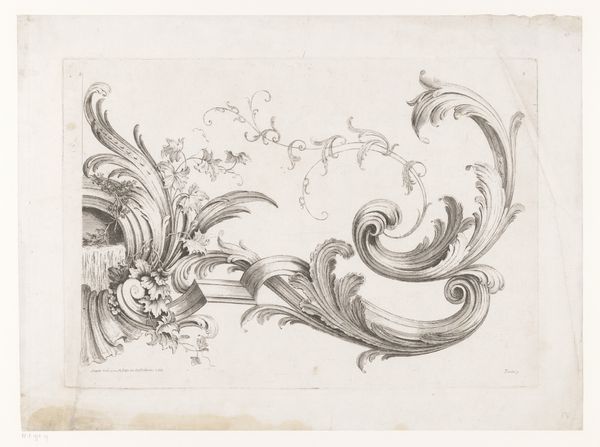
Dimensions: height 204 mm, width 290 mm
Copyright: Rijks Museum: Open Domain
Editor: This is an engraving called "Trophies of Love and Bacchus," made between 1784 and 1806, and its artist is anonymous. It's incredibly detailed, with all these symmetrical motifs, but there's a lot going on. What stands out to you when you look at this? Curator: What interests me most is the process and the materials involved in creating this engraving. Think about the labor that goes into meticulously carving these fine lines. How does the act of producing this kind of object challenge the traditional distinctions between high art and craft? Editor: I never really thought about it that way. So, you're focusing more on the "how" rather than just the "what" it depicts? Curator: Exactly. Consider the social context in which this print was made. It was likely meant for mass consumption, part of a decorative scheme perhaps. How does that impact its value, both artistically and economically? What kind of labor would be expected? Editor: It feels removed from individual artistic expression and more towards decoration? So, it speaks about consumption, like how the wealthy display these intricate decorations. Curator: Precisely! The choice of materials - the paper, the ink, the metal plate - each plays a crucial role. The very materiality shapes our understanding of its value. Is this simply a reproduction, a functional design, or can we elevate it to "art?" How does its wide distribution impact its cultural capital? Editor: I guess I hadn’t considered all those questions. It changes my perspective of older artwork when you examine its methods and purpose rather than a 'who did it' and ‘why'. Curator: Reflecting on the means of production, the labor, and the intended use really forces us to reconsider how we assign value to objects and challenge established hierarchies. Hopefully you see some more complexity than just design? Editor: Absolutely. Thanks to this perspective, it adds context that gives it a new value for me. I am eager to think differently now.
Comments
No comments
Be the first to comment and join the conversation on the ultimate creative platform.
